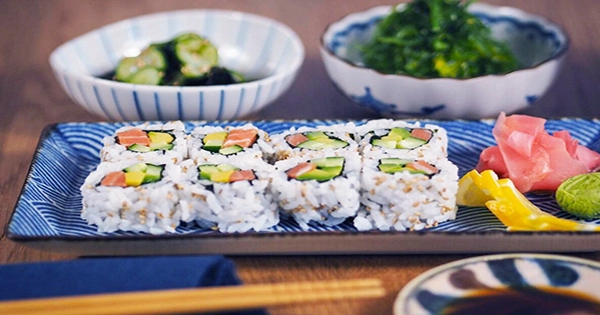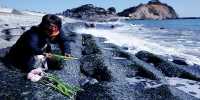Wildtype, a six-year-old San Francisco-based company that develops farmed salmon from cells outside the animal, just acquired $100 million in Series B funding to expand its reach from top restaurants to supermarkets. It’s unclear if it’ll be able to carry out this strategy, but it’s easy to see why its new investors are excited, including L Catterton, Cargill, Leonardo DiCaprio, Bezos Expeditions, Temasek, and Robert Downey Jr.’s FootPrint Coalition.
The general argument for cell-cultured seafood is that it can help to safeguard wild species and reduce overfishing. It also ostensibly offers the same nutritional benefits as wild-caught fish, but without the mercury, microplastics, and other toxins that may be found in both wild and farmed fish.
Even better, according to Wildtype co-founders Justin Kolbeck and Aryé Elfenbein, Wildtype has figured out how to make “sushi-grade” salmon by cultivating cells of a Pacific salmon, also known as a Coho salmon, in steel tanks that resemble brewery tanks, then putting the cells in “scaffolds,” which are structures made of plant-derived ingredients, to guide the cells to shape each cut of fish. (The founders claim that Wildtype isn’t producing fins or heads here, but rather the type of salmon cut you’d find behind the sushi bar.)
The two friends, a former business consultant and a certified cardiologist, are so confident in their final product that they created a tasting area just beyond the tanks last year so chefs could sample the fish and learn more about its manufacturing. If everything goes according to plan, those chefs will soon be serving Wildtype’s fish among their other dishes. Grocery businesses will be affected as well.
It’s right in front of you. The deals “pave the way for consumers to experience Wildtype’s cultivated salmon once the company’s manufacturing capabilities achieve the required scale,” according to the announcement, and “pave the way for consumers to experience Wildtype’s cultivated salmon once the company’s manufacturing capabilities achieve the required scale.” The trick is going from point A to point B. First, according to Kolbeck and Elfenbein, bringing Wildtype’s salmon to the same — or lower — price as standard sushi-grade salmon is still a work in progress.
It’s also unclear if customers will embrace cell-grown fish with the same enthusiasm as they do plant-based meat. Although most people are aware that red meat eating is linked to an increased risk of cancer, fewer people are aware of the PCBs, dioxins, and mercury found in some salmon as a result of the food the salmon have consumed. More stringent controls on contamination levels in feed ingredients have been implemented, lowering contaminant levels in these fish and making them safe to eat under federal guidelines.
Perhaps most importantly, Wildtype is still waiting for FDA approval after engaging in a consultation process with the agency in 2019; until that happens, it won’t be able to sell through the restaurants it plans to collaborate with. (As for liability insurance, the company claims to have the same type of coverage as meat and seafood manufacturers.) Still, the firm is intriguing for a variety of reasons, including the fact that one of its main competitors, Impossible Foods, has stated that it is working on plant-based rather than cell-grown seafood, but has yet to release anything.
Meanwhile, other venture-backed startups in the same market appear to be concentrating on different types of seafood. For example, BlueNalu is attempting to develop cultured mahi mahi as its first cultured seafood product, while Gathered Foods is developing single-serve, ready-to-eat plant-based tuna pouches. Because it only grows the edible sections of the salmon, Wildtype’s product could be a lot faster and more efficient to utilize. (Chefs may theoretically avoid the time and waste associated with traditional fish slaughtering.)
Another point made by Wildtype is that of traceability. “It’s especially significant in the area of seafood,” Elfenbein says, “where customers frequently order one thing and receive another.” It’s easy to see how the 35-person company may make a dent if it can scale and sell its fish at a reasonable price. We’ll have to wait and see. Wildtype said it won’t be able to scale the fish any quicker than it takes now, which takes four to six weeks. It can, however, open more locations and develop a completely automated production system, both of which it has yet to do.













